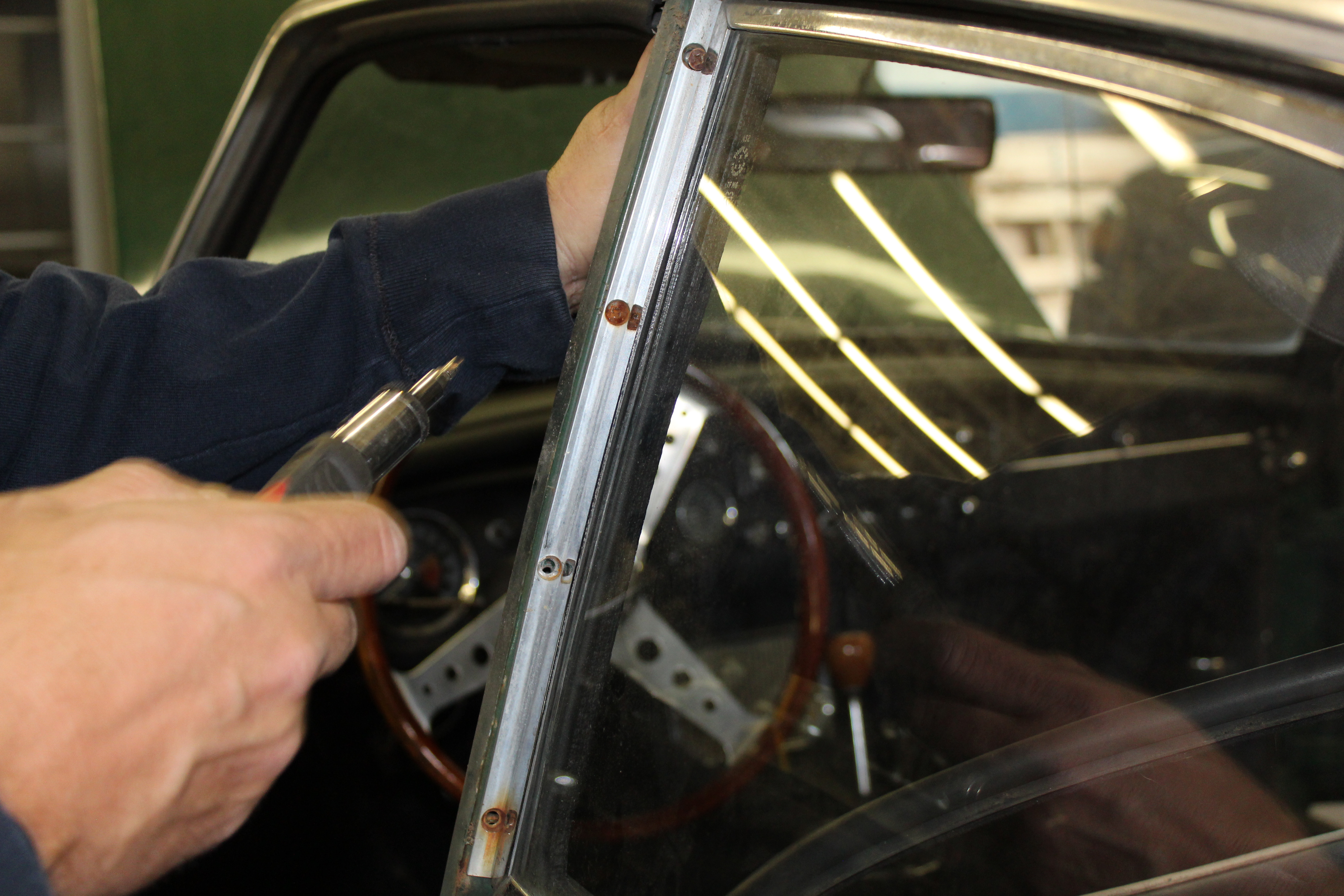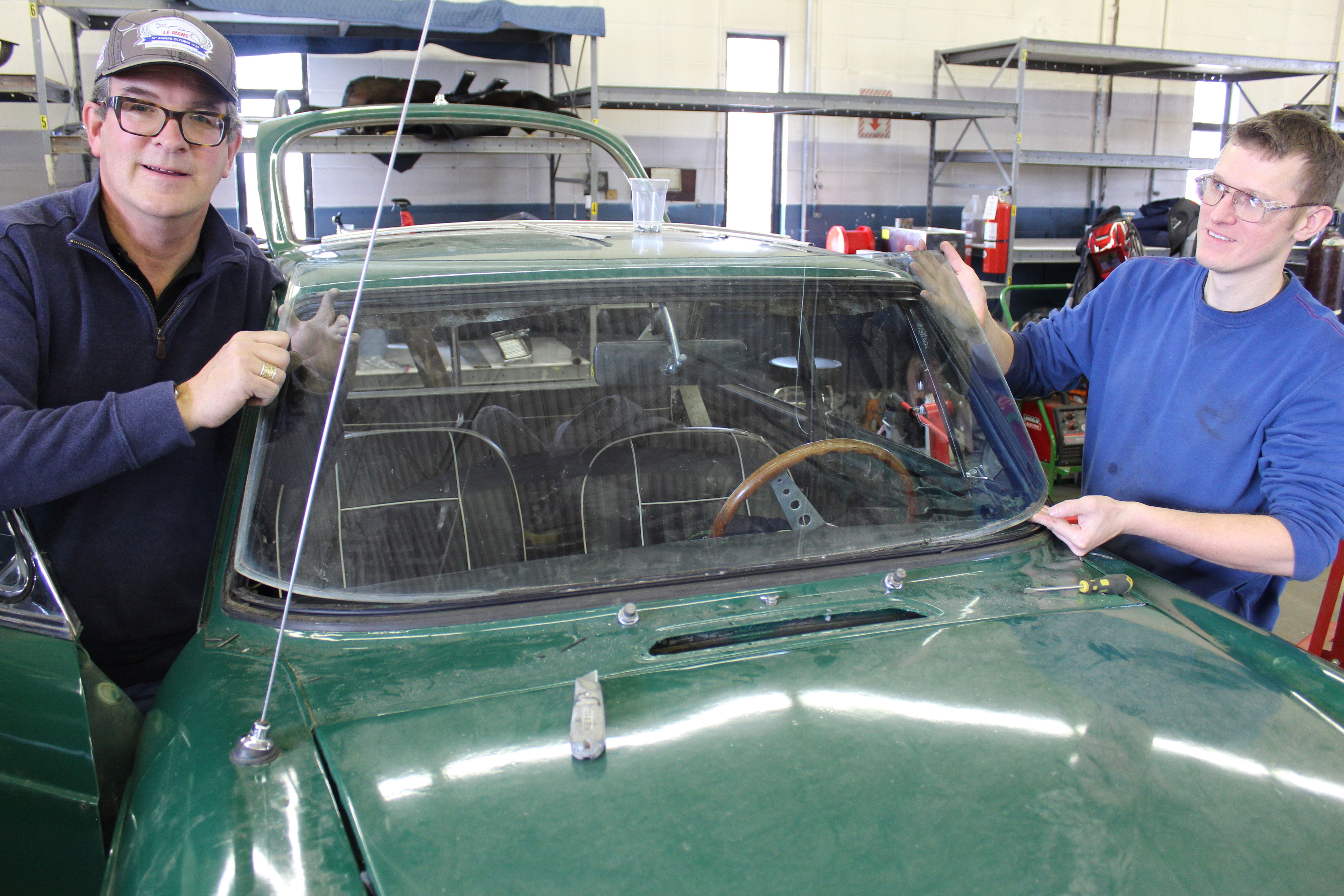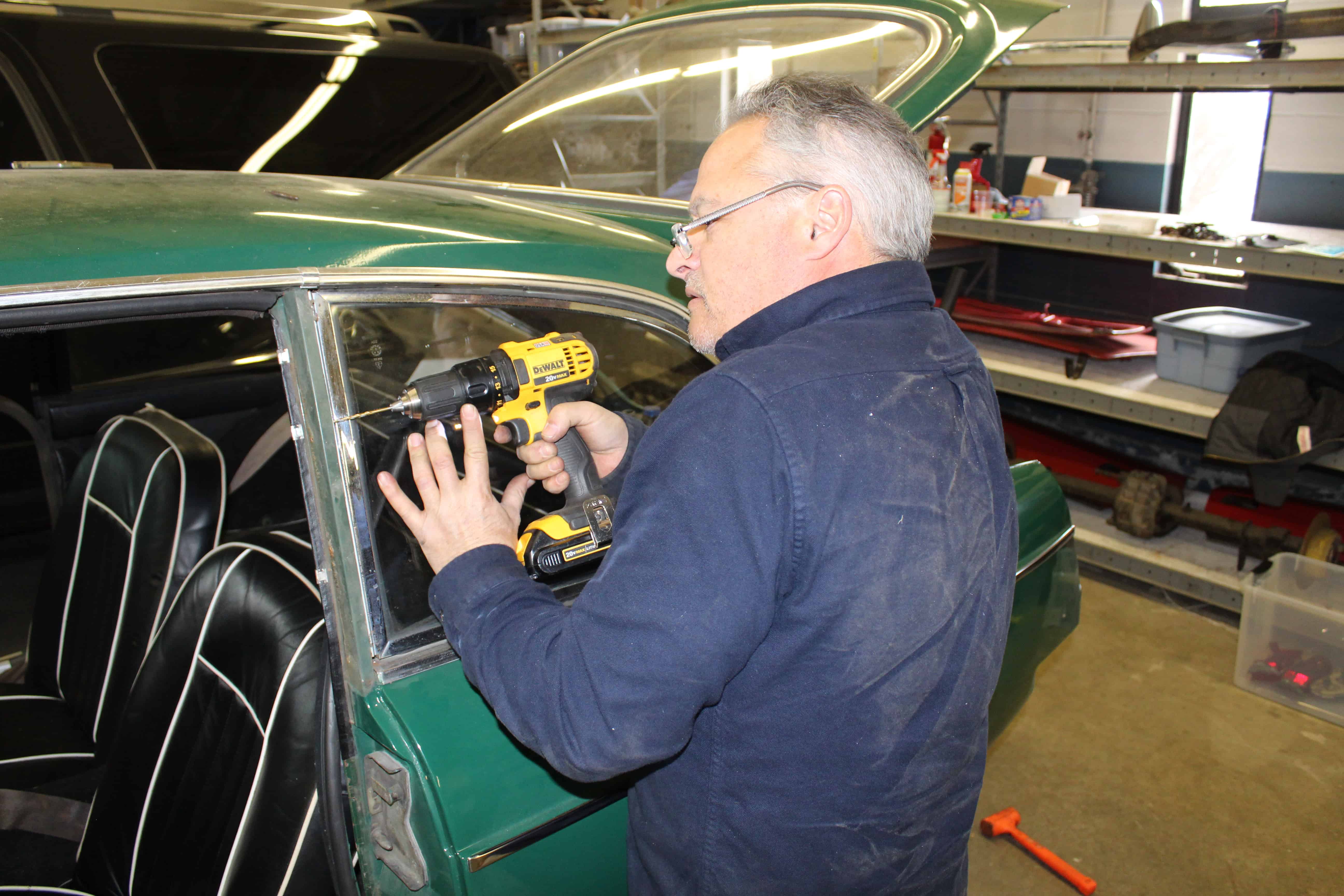In our previous segment on the 1967 MGB GT restoration, we had taken the car to The Paddock shop and looked at what we thought was needed and created a project plan for the restoration. The team at Paddock is experienced and knows how to put such plans together.
Creating a plan is the right way to do a car restoration. Now it’s time to knock off the line items. When you are doing a project like this restoration, help is not only wanted but often needed. Happily Michael Donnelly, the Paddock owner, Jay Hoyt the shop manager and master mechanic Mike Maciorowski were there to assist me with the disassembly of the car.
We started by removing all the chrome trim. This sounds like an easy thing to do but most of the trim on an MGB is attached with pop rivets. The only way to remove it this trim is to drill out each individual pop rivet.

Sounds easy right? Well, if you have ever drilled out pop rivets, even with the bit designed to do this, you know it can be very time consuming.
Add to this that there are no fewer than 120 pop rivets holding the trim on this car and you begin to understand how tedious and time-consuming this is. It took me the better part of two full days to get the rivets drilled out as there always seems to be one you miss.
Next, the molding and other trim was removed, and then the grille, door glass, windshield, side window glass, and other bits.
The grille came out easily and in one piece, same for the side window glass, though we found more of the accursed pop rivets on the quarter-window bright work.

The door glass was another story. This is a fiddly job, but after about two hours of messing around we got the windows out.
I was worried about the potential of rust in the window channels on the quarter-window glass, the rear hatch glass and the windshield. After removing these pieces, I was happy to find that there was no evidence of rust in these known MGB trouble spots, further affirming how good a car this MGB is.

The other thing we found was the original 1967 MGB paint. Under the quarter windows, door strikers and other various areas, we could see the original paint. It is many shades darker than the Kermit green the rest of the car is and provides a good way for us to find a perfect paint match because these areas were never exposed to sunlight and thus never faded.
The next piece of this restoration puzzle will be to pull the engine and gearbox. The only way to properly paint a car is to remove both.
In addition, the engine needs new front and rear main seals due to leaks and the gearbox has always had a weird sound, so we are likely going to rebuild the gearbox as well.






I hate pop rivets the way Jesus hates the devil. Sorry you had to deal with them.
Ya take a car that far apart, why not just heave a sigh, then redo the entire driveline? It’s only money, and if you work you’ll always have that- but a detailed resto on a car you love? How many of those do ya get in a lifetime?
FYI- early in the Miami Vice ’90’s, a friend and I replaced the Ferguson tractor derived 1500 and crunchy 4spd in a Spitfire (‘member them?) with the turbo 2.3L/5spd from an interior burnt Thunderbird Turbo Coupe. Almost immediately, the Spit’s swingaxle disintegrated, on 14 inch Maglites & Kmart specials. Re-rigged with a hodgepodge of Jag pumpkin/axles, brakes & joints, aftermarket coilovers, some 2×3 rectangular tubing, the requisite math & measurements… well.
Wish we’d a had access to modern injection/computer/boost control. Da** thing was hilariously undrivable- turbo lag to shame the most hyper 911’s, nose heavy like a big block V8 Vega, rear brakes so much more powerful than the itsy fronts that even with an aftermarket proportioning valve slowing down was best done with the gearbox. Oh, but in a stoplight contest, where curves and braking were secondary? Many small block Camaro/Mustang/Mopar drivers saw the a** end of the Spit… and some big block cars, too, if their drivers were inept. And in the days when 20+ mpg was outstanding, driven gently- which, outside of racing was the only way to preserve one’s life- the Spit would routinely post 24-26 mpg in mixed, ah, driving. Probably better to say "guiding with your heart in your throat".
Had a Crown Engineering V8 Corvair conversion, too, but that’s not germane.
Good luck with your MG. (May I suggest the Esslinger Engineering version of the Ford 2.3, in say, 3.3L and with the turbo kit from a wrecked new 2.3 Mustang, aftermarket computer, and the 6spd attached? Just sayin’).
Anyway, have fun.
-R
Ryan,
I’ve heard of a couple of MGB’s done with a 2.3 Turbo Ford conversion pulled from an older Scorpio/Turbo Coupe/SVO. If done right with the computer all sorted out they can be quite a screamer! MG’s solid, live-axle rear is more durable and can handle that power more readily than Triumph’s more delicate suspension could.
Ford’s newer 2.3 Ecoboost, which as we’ve seen is capable of more than 300+ hp in production form could be a real kick in the pants! And possibly lighter weight too due to its all-aluminum construction vs the old Lima motor’s cast iron block. although once you factor back in the extra camshaft, extra valvetrain, and overall greater complexity; it may come out about the same.